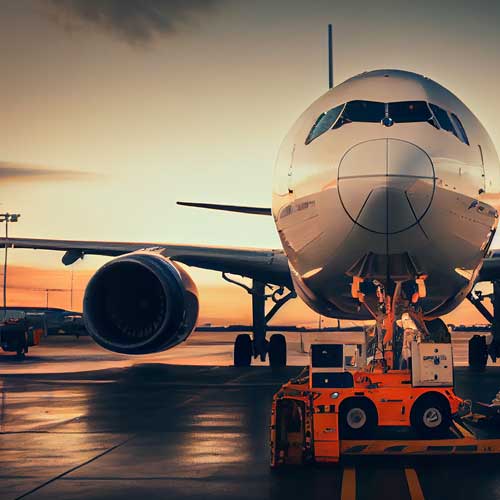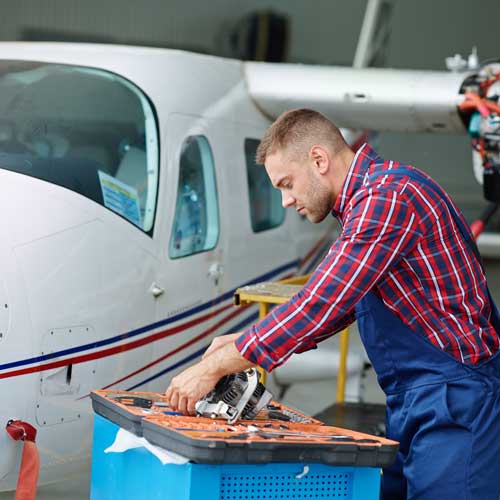In the dynamic field of aviation, licensed Aircraft Maintenance Engineers (AMEs) play a crucial role in ensuring the safety and reliability of aircraft. If you're an AME, your expertise is highly sought after by leading aviation companies worldwide. Explore the exciting employment opportunities awaiting you in this thriving industry.
As per the Indian Aircraft Act, 1934, and the rules made thereunder, the release of Indian Registered Aircraft for flying is mandated after certification by a licensed Aircraft Maintenance Engineer, as licensed by the Directorate General of Civil Aviation (DGCA). An AME certifies that an aircraft is airworthy and safe for flying before any flight can take place. Individuals aspiring to obtain an AME licence need to undergo a licensing program as per DGCA regulations.
Even if you hold a BSc, BE/B.Tech, ME/M.Tech, or PhD in Aviation / Aeronautical / Aerospace, certification of any Indian registered aircraft requires licensing by the DGCA, as per regulation (CAR-66). Only a licensed AME can certify an aircraft for airworthiness and safety.
A licensed AME can certify:
- Large aircraft operated by airlines.
- Aircraft operated for charter operations and business jets.
- Aircraft used by the State and Central Government for various needs.
- Aircraft required for pilot’s flying training.
After becoming a licensed AME, you can seek employment in various national and international aviation industries across the world.
Top Employment Opportunities for Licensed Aircraft Maintenance Engineers
After obtaining a licence from the Directorate General of Civil Aviation (DGCA) as an Aircraft Maintenance Engineer (AME), a myriad of opportunities opens up within the aviation industry. The AME licence is a crucial qualification that allows individuals to contribute significantly to the safe and efficient operation of aircraft. This licence is not only a testament to one's technical expertise but also a gateway to various aviation segments, with many positions being deemed mandatory by civil aviation rules.

Commercial Airlines
Join major airlines as a certifying licensed Aircraft Maintenance Engineer, ensuring the airworthiness of commercial aircraft. Your role may involve routine maintenance, troubleshooting, and scheduled inspections, contributing to the safe and efficient operation of flights.

Maintenance, Repair, and Overhaul (MRO) Facilities
MRO facilities specialise in the repair and maintenance of aircraft. As an Aircraft Maintenance Engineer in an MRO facility, you'll work on various aircraft types, gaining exposure to different systems and technologies.

Aerospace Manufacturing
Companies
Aircraft manufacturers rely on Aircraft Maintenance Engineers to ensure the quality and safety of their products. Joining a manufacturing company allows you to be part of the process from design to production, contributing to the creation of cutting-edge aircraft.

Corporate Aviation
Enter the world of corporate aviation, where you'll be responsible for maintaining private and business jets. This sector often offers a more personalised and varied work environment.

Government Agencies
Government aviation authorities like DGCA and military organisations also employ licensed Aircraft Maintenance Engineers to oversee the maintenance and safety of their aircraft fleets. This sector can offer stability and unique challenges. The role of an Airworthiness Officer is one of the major positions available with government aviation-related agencies.
Employment Opportunities for Aircraft Maintenance Engineers while pursuing the examination for an AME licence
Favourable job prospects and career options are available for individuals who are Aircraft Maintenance Engineers (AMEs) based on the specific stream of courses they have completed and the maintenance experience they possess while in the process of obtaining their AME licence.
Aircraft Maintenance Manager:
This role typically involves overseeing the day-to-day operations of the maintenance department, including scheduling, personnel management, and ensuring compliance with regulations.
Workshop Maintenance Manager:
Responsible for managing aircraft component maintenance workshops, ensuring that maintenance tasks are performed to the required standards.
Quality Manager:
Quality Managers are responsible for establishing and maintaining a quality management system to ensure that all maintenance activities meet regulatory and quality standards.
Continuing Airworthiness Manager:
This role focuses on ensuring that aircraft remain in an airworthy condition throughout their operational life, including oversight of maintenance programs, etc.
Planning Manager:
Planning Managers are involved in scheduling maintenance tasks, allocating resources, and ensuring that maintenance activities are carried out efficiently.
Aircraft Maintenance Technician:
These technicians perform maintenance tasks under the supervision of licensed AMEs. They assist in inspections, repairs, and component replacements.
Technical Officers:
Technical Officers provide technical support and expertise in various areas, such as avionics, airframe, or powerplant systems.
Store Inspectors:
Store Inspectors are responsible for managing and inspecting aircraft spare parts and components to ensure their quality and airworthiness.
How to Advance Your Career as an AME
- Continuous Learning: Stay updated on the latest technologies and industry regulations through continuous education and training programs.
- Specialisation: Consider specialising in a specific area such as avionics, engines, or structures to enhance your expertise and marketability.
- Networking: Build a strong professional network by attending industry events, joining online forums, and connecting with peers in the aviation community.
- Certifications: Pursue additional certifications or endorsements to broaden your skill set and increase your career opportunities.







Apply Now